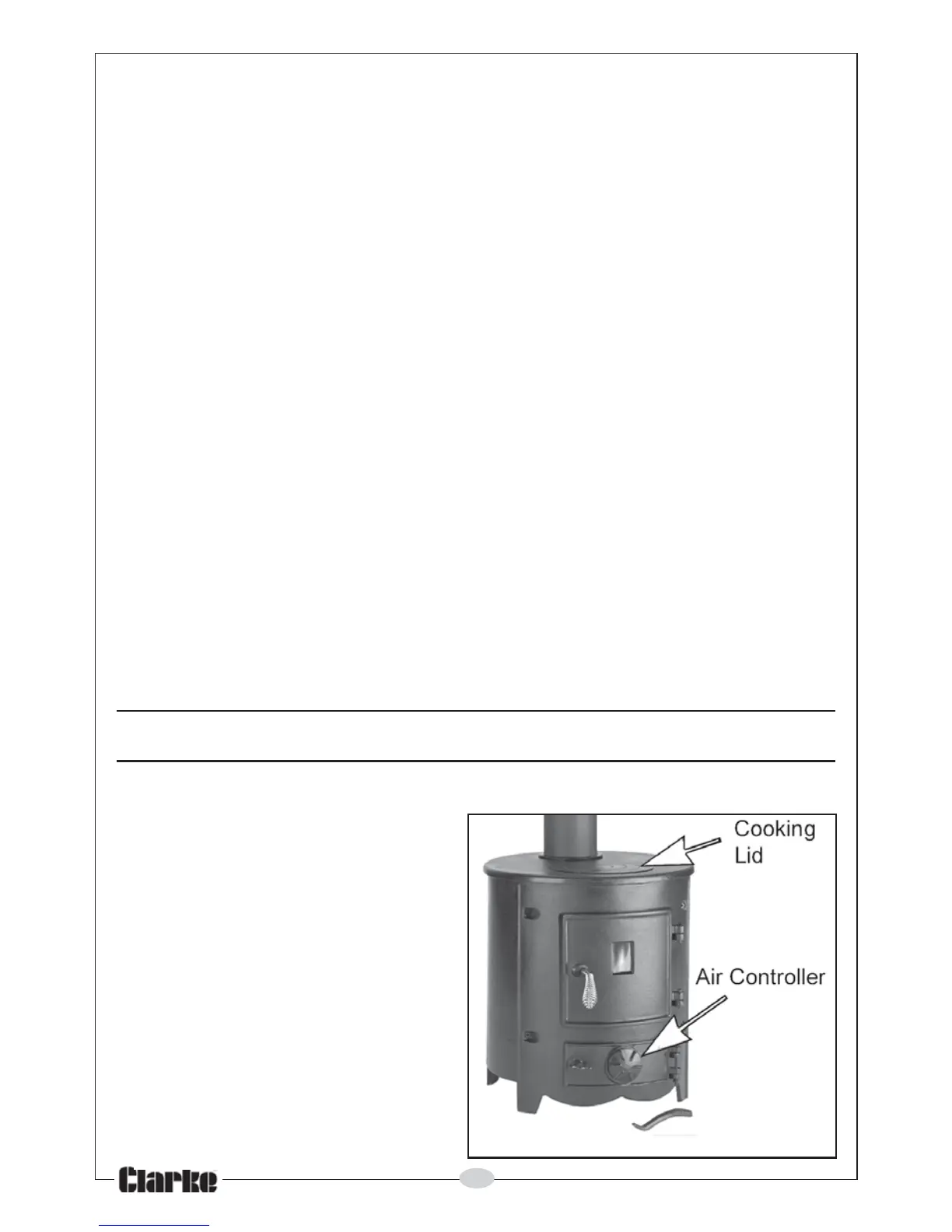14
CARBON MONOXIDE ALARMS
Due consideration should be given to the dangers of carbon monoxide
poisoning following incomplete combustion of solid fuels in an enclosed
space. Carbon monoxide detectors to BS EN 50291 are available for use in
domestic premises and details are available in the official HETAS guide that
can be viewed on their website at www.hetas.co.uk.
Where a new or replacement fixed solid fuel appliance is installed in a
dwelling, a carbon monoxide alarm should be provided in the room where
the appliance is located.
Carbon monoxide alarms should comply with BS EN 50291: 2001 and be
powered by a battery, designed to operate for the working life of the alarm.
The alarm should incorporate a warning device to alert users when the work-
ing life of the alarm is ending. Mains-powered BS EN 50291 Type A carbon
monoxide alarms with fixed wiring (not plug-in types) may be used as alterna-
tive applications, provided they are fitted with a failure warning device.
The alarm should always be located in the same room as the stove:
a. On the ceiling at least 300mm from any wall or, if located on a wall, as
high up as possible (above any doors and windows) but not within 150mm
of the ceiling and;
b. Between 1m and 3m horizontally from the appliance.
Note: Further guidance on the installation of carbon monoxide alarms is
available in BS EN 50292:2002 and from manufacturers instructions. Provision
of an alarm should not be regarded as a substitute for correct installation and
regular servicing.
USING YOUR STOVE
THE CONTROLS
The amount of heat emitted by the
stove is regulated using the follow-
ing air controls:
A) The air supply is controlled using
the air control built into the ash
door.
B) The cooking lid rests on top of
the stove.
Note: Wear a glove to open the
door when the door handle
becomes hot.
Fig 8
